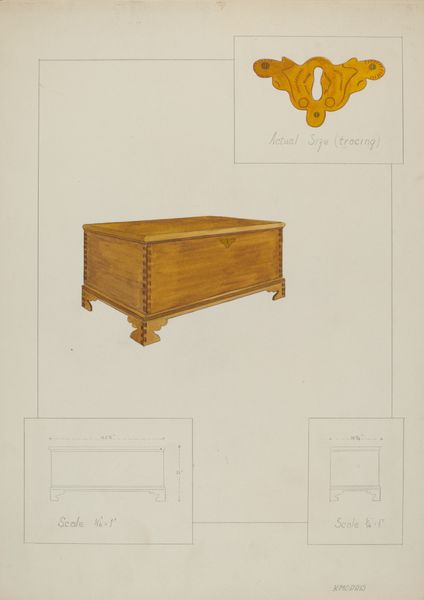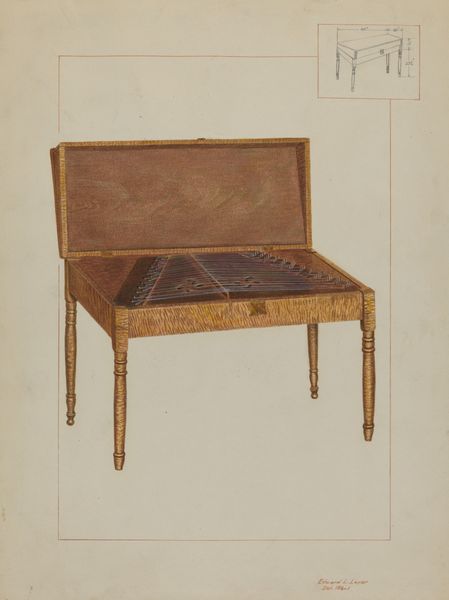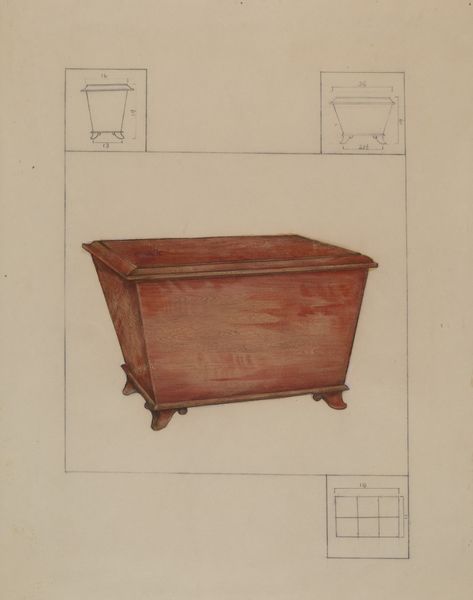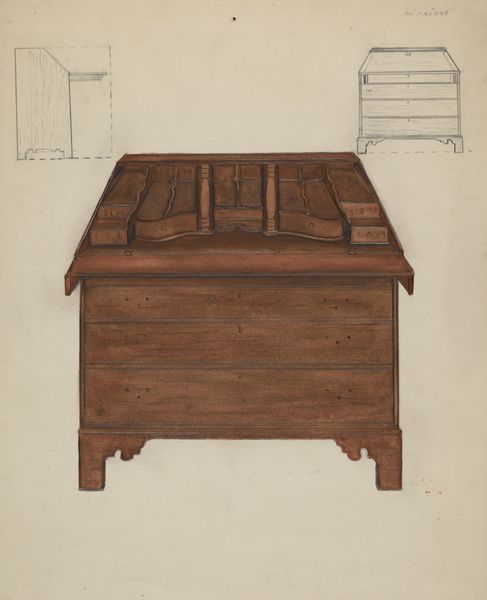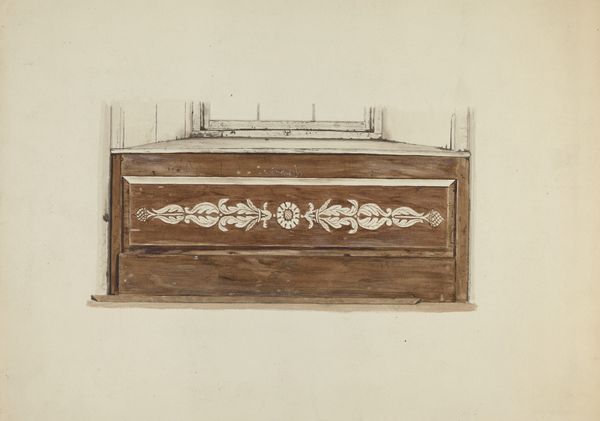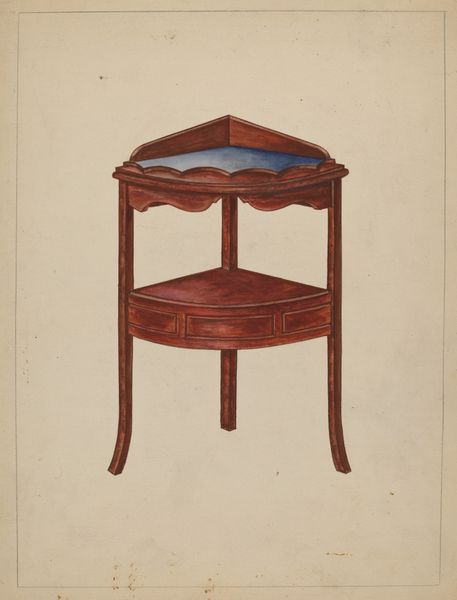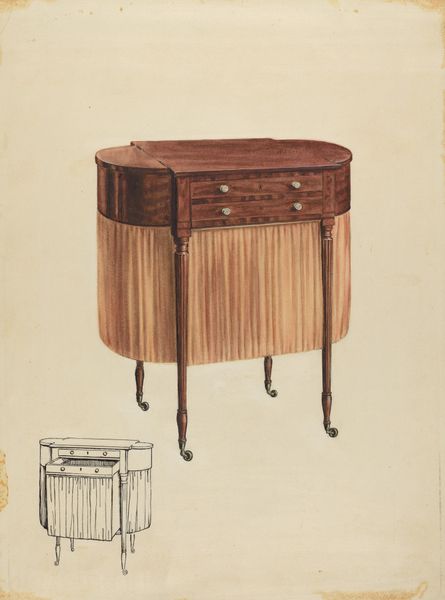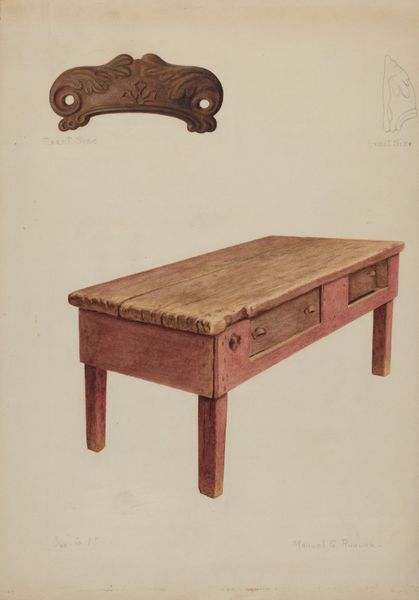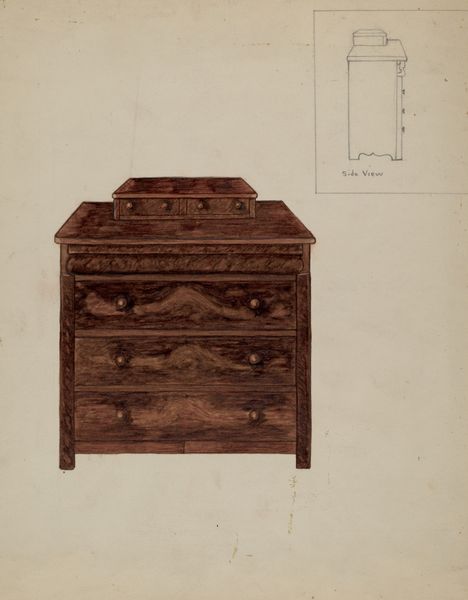
drawing, watercolor
#
drawing
#
watercolor
#
modernism
#
watercolor
Dimensions: overall: 30.8 x 23.1 cm (12 1/8 x 9 1/8 in.)
Copyright: National Gallery of Art: CC0 1.0
Curator: This is Herbert Marsh's "Sewing Box," a modernist piece created around 1936, rendered in watercolor and drawing. It has an inviting simplicity about it, wouldn't you say? Editor: Immediately, I'm drawn to the implied intimacy of this object. A sewing box is more than just a container; it's a repository of care, a miniature world holding the tools of creation and repair. It speaks to the domestic sphere, particularly to women's roles, but the formal design reads almost like a tomb. Curator: A tomb? That’s a rather strong interpretation! But I’m interested. Tell me more. While its design embraces the streamlining and functionalism of the era, it presents itself as the container of labour rather than the tools, hinting that it would rather be seen, used, than the act of use. The modernist influence emphasizes industrial production techniques rather than the labour itself, don't you think? Editor: Absolutely, it hints at both the individual care and the cultural weight placed upon women within the home. But think about the act of sewing, the binding, the mending—it’s cyclical, like life and death, a continual process of repair. I also can't help but note how often boxes show up in mythology or iconography as symbols of secrets or even containers of dark curses like Pandora’s Box, adding to that tension, don't you think? Curator: That is certainly an alternative reading that may be the intention of Marsh as the symbolism can work across the container of creativity, it’s holding back that potential and allowing this object to serve as an act of functional decoration. I think by focusing on its making as watercolor and pencil the process almost becomes lost or diminished. And those tiny legs elevate it, separate it from common labour or material use, as it’s precious by that suspension in the image. Editor: A delicate perspective! Well, seeing your insight in the modernist design and construction as symbolic and being set above the idea of normal craft labour definitely enhances my experience of it. I can consider its implications anew. Curator: And seeing your reading allows me to wonder if there were anxieties of women’s social role at the time bubbling beneath the modern aesthetics of a domestic tool in design form. Thank you!
Comments
No comments
Be the first to comment and join the conversation on the ultimate creative platform.
